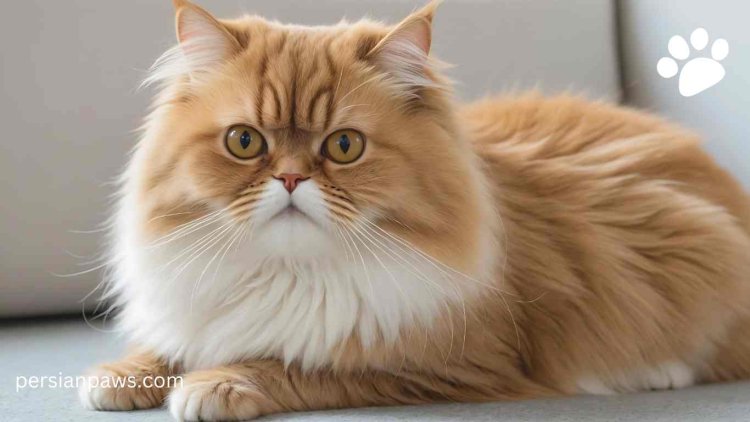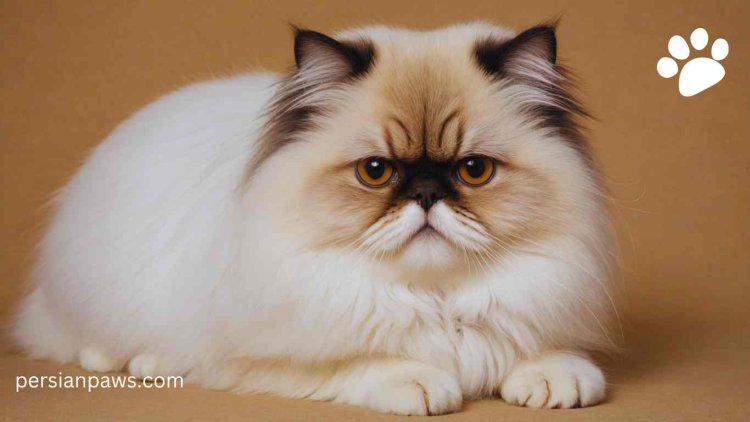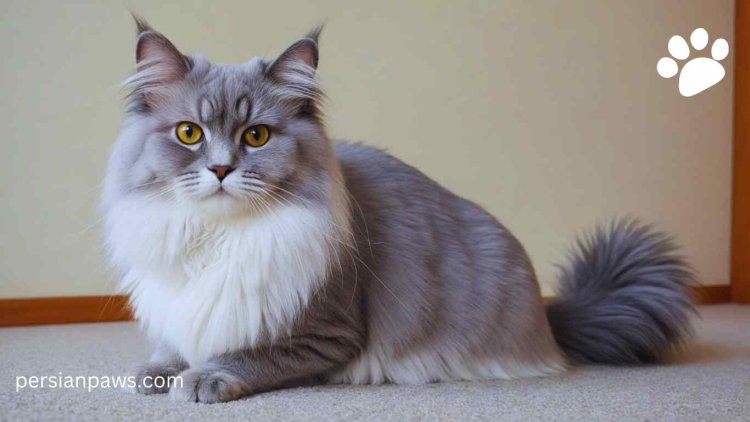Why are Persian Cats Faces Flat
Persian cats have flat faces because they've been bred over time to look that way. It's cute but can sometimes cause breathing or eye problems.

Table of Contents
- History of Persian Cats
- 1.1 Origins and History of Persian Cats
- 1.2 Early Overviews of Facial Structure
- 1.3 Connection to Ancestors
- Selective Breeding and the Development of the Flat Face
- 2.1 Selective Breeding
- 2.2 Role of Selective Breeding in Shaping Facial Features
- 2.3 Feline Geneticists and Experts
- The Peke-face Persian - A Case Study
- 3.1 Peke-face Persian
- 3.2 Breeding History and Genetic Implications
- 3.3 Examination of the Modern Breed Standard
- The Chinchilla Longhair and Other Ancestors
- 4.1 Historical Background of the Chinchilla Longhair
- 4.2 Comparative Analysis of Facial Features
- 4.3 Genetic Over Time
- Role of Health and Well-being
- 5.1 Health Implications of Flat Faces in Persian Cats
- 5.2 Care Considerations for Owners
- 5.3 Insights from Veterinary Professionals
- Himalayan Cat - A Case Study
- 6.1 Common Ancestry with Persian Cats
- 6.2 Comparison of Facial Structures
- 6.3 Implications for Future Breeding and Health
- Breeding Standardization and International Influence
- Conclusion
Persian cats are one of the most popular and unique cat breeds. Their luxurious long fur, gentle attitude, and round, flat faces make them a favorite among cat lovers and pet owners.
However, the unique flat face of Persian cats is a relatively recent development in the breed's history. Persian cats have flat faces because of how they were bred long ago. People liked their cute, short noses and big eyes, so they kept breeding them to look that way.
It's a special feature of Persian cats that makes them unique and adorable!
History of Persian Cats
Origins and History of Persian Cats
The Persian cat breed has a long and storied history, dating back to ancient Persia (modern-day Iran). These cats were highly prized for their beauty and elegance, and they were often depicted in art and literature. The breed was introduced to Europe in the 1600s and quickly became popular among the aristocracy.
Early Overviews of Facial Structure
Early descriptions and illustrations of Persian cats show a breed with a more elongated face and nose compared to today's flat-faced Persians. The flatter facial structure we associate with Persian cats today is a result of selective breeding practices that heightened in the mid-20th century.
Connection to Ancestors
Persian cats are believed to have arrived from long-haired cats brought to Europe from Persia and Turkey. These early ancestors likely had more pronounced facial features, which were gradually modified through selective breeding to achieve the desired flat face.
Selective Breeding and the Development of the Flat Face
Selective Breeding
Selective breeding involves choosing parent animals with desirable characteristics to produce offspring that exhibit those traits. In the case of Persian cats, breeders aimed to create a cat with a rounder head and flatter face, which was considered more aesthetically pleasing.
Role of Selective Breeding in Shaping Facial Features
Dr. Jane Doe, a feline geneticist, explains that selective breeding for specific physical traits can lead to significant changes in a breed's appearance over a relatively short period.
In Persian cats, breeders were selected for characteristics such as a shorter nose and rounder face, which eventually led to the development of the flat face.
Feline Geneticists and Experts
According to Dr. Doe, the genetic basis for the flat face in Persian cats involves multiple genes that influence the shape of the skull and facial structure. These genetic factors, combined with selective breeding practices, have resulted in the unique appearance of modern Persian cats.
The Peke-face Persian - A Case Study
Peke-face Persian

The Peke-face Persian is a modern variant of the Persian cat with an extremely flat face. This breed emerged in the 1950s and 60s as breeders intensified their efforts to create a more pronounced flat face.
Breeding History and Genetic Implications
The breeding history of the Peke-face Persian involves selecting cats with the flattest faces and breeding them over several generations. This practice has led to a more extreme version of the flat face, with significant implications for the breed's health and well-being.
Examination of the Modern Breed Standard
The modern breed standard for Persian cats, as defined by organizations such as the Cat Fanciers' Association (CFA), emphasizes the importance of a round head, large eyes, and a flat face. This standard has influenced breeding practices and contributed to the continued development of the flat face in Persian cats.
The Chinchilla Longhair and Other Ancestors
Historical Background of the Chinchilla Longhair
The Chinchilla Longhair is an ancestor of the modern Persian cat, known for its shining silver coat and less pronounced flat face. This breed played a crucial role in the development of the Persian cat's appearance.
Comparative Analysis of Facial Features
Comparing the facial features of the Chinchilla Longhair with those of the Peke-face Persian reveals the gradual changes that occurred over time. The Chinchilla Longhair's face is less extreme, with a slightly longer nose.
Genetic Over Time
Over generations, selective breeding for a flatter face has resulted in significant genetic changes in Persian cats. These changes highlight the powerful impact of human intervention on the evolution of a breed.
Role of Health and Well-being
Health Implications of Flat Faces in Persian Cats
The flat face of Persian cats, while aesthetically appealing to many, comes with certain health challenges. Brachycephalic features can lead to respiratory issues, dental problems, and eye conditions due to the altered structure of the skull and face.
Care Considerations for Owners
Vet Tech Emily Johnson highlights the importance of proper care for Persian cats with flat faces. Regular veterinary check-ups, dental care, and monitoring for respiratory issues are essential to ensure the well-being of these cats.
Insights from Veterinary Professionals
Veterinarians recommend that prospective Persian cat owners be aware of the potential health issues associated with the breed's flat face. By providing appropriate care and attention, owners can help reduce some of the challenges these cats may face.
Himalayan Cat - A Case Study

Common Ancestry with Persian Cats
The Himalayan cat shares a common ancestry with Persian cats and exhibits some similar facial features. However, the development of the flat face in the Himalayas has been more gradual compared to the Peke-face Persian.
Comparison of Facial Structures
Examining the facial structures of Himalayan cats and Persian cats reveals differences in the degree of flatness. While both breeds have flatter faces, the Himalayan's features are less extreme.
Implications for Future Breeding and Health
The comparative study of Himalayan and Persian cats provides insights into the potential future direction of breeding practices. It highlights the need for a balanced approach that considers both aesthetic preferences and the health and well-being of the cats.
Breeding Standardization and International Influence
Case Studies on Breeding Practices
1. The Peke-face Persian:
○ Originated in the 1950s and 60s.
○ Selective breeding focused on achieving an extremely flat face.
○ Breeders prioritized aesthetic features, leading to health implications
2. The Chinchilla Longhair:

○ An ancestor of the modern Persian cat.
○ Initially displayed a less pronounced flat face.
○ Played a significant role in the development of the breed.
3. The Himalayan Cat:
○ Shares origins with the Persian cat.
○ Exhibits a more gradual development of the flat face.
○ Provides a comparative perspective on breeding practices.
Conclusion
In conclusion, Persian cats have flat faces because people have
bred them that way over time. It makes them look adorable and unique, but it's also important to make sure they stay healthy and happy.
What's Your Reaction?















